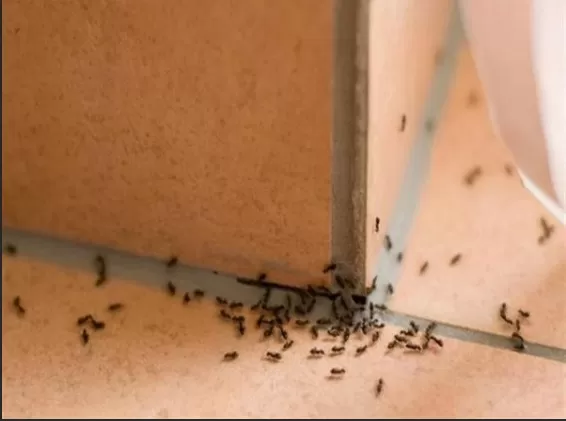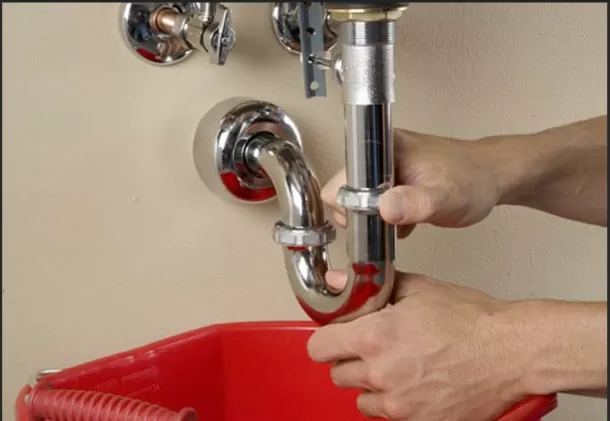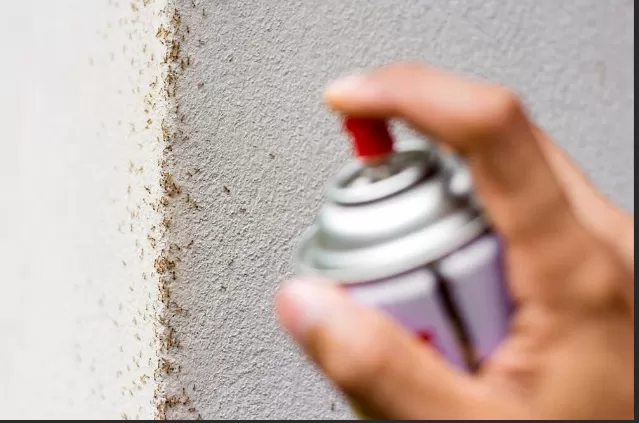Exterminator’s Secrets: Things They Won’t Share Without a Fee. If these DIY pest control methods do not resolve the issue or if the infestation worsens, it may be necessary to contact a professional exterminator who can provide targeted solutions to address the problem effectively and safely.
Controlling Pesky Critters: Effective Strategies for Bug Management on a Budget

Are you tired of battling bugs? Dealing with pesky gnats hovering around your meals or witnessing the unpleasant sight of roaches scuttling across your floors can be truly frustrating.
It’s no wonder that exterminators always seem to be in high demand. While bugs may serve a purpose in your garden, having them invade your indoor spaces is far from ideal, as they can pose health risks too.
Instead of relying solely on costly professional services, it’s worth knowing that there are simple yet effective measures you can take to eliminate these bothersome pests on your own. By implementing the following eight practical tips, you can regain control over your bug problems without breaking the bank.
Seal the Entry Points: Prevent Bugs from Sneaking In By meticulously sealing off any cracks or gaps in your doors, windows, walls, and foundation, you can significantly reduce the chances of bugs finding their way into your home.
A little effort spent on caulking and weatherstripping can go a long way in keeping unwanted critters at bay.
Maintain a Clean and Tidy Home: Eliminate Bug-Friendly Environments Bugs are attracted to food crumbs, spills, and clutter, so maintaining a clean and organized living space is vital.
Regularly vacuuming, sweeping, and wiping down surfaces can remove potential food sources, making your home less appealing to insects.
Proper food storage: Deny Bugs a Banquet Storing your food in airtight containers can make a world of difference in deterring bugs from feasting on your pantry supplies.
Keep your cereals, grains, and snacks secure, denying pests easy access and discouraging them from setting up camp in your kitchen.
Eliminate Standing Water: Drown Mosquito Breeding Grounds Mosquitoes thrive in stagnant water, so ensure that your surroundings are free from pools of water that can serve as their breeding grounds.
Regularly empty containers, fix leaks, and maintain proper drainage to minimize mosquito populations around your property.
Trim Vegetation: Reduce Bug Hideouts Overgrown vegetation provides an ideal shelter and breeding ground for a variety of bugs.
Regularly trim your bushes, trees, and shrubs, keeping them well-maintained and preventing bugs from establishing nests near your home.
Natural Repellents: Harness the Power of Nature Consider using natural repellents such as essential oils or plants with bug-repellent properties to ward off pests.
Peppermint, lavender, citronella, and eucalyptus are known for deterring insects, and incorporating them into your living spaces can help create an inhospitable environment for bugs.
DIY Traps and Baits: Take Charge of Bug Capture Instead of relying solely on professional-grade traps, explore homemade options to capture and eliminate bugs.
Simple solutions like vinegar fruit fly traps or sugar and borax ant baits can be surprisingly effective in curbing bug populations.
Educate Yourself: Identify and Understand the Bugs Invading Your Space Take the time to research and learn about the specific bugs that are causing you trouble.
Understanding their habits, preferred habitats, and vulnerabilities can empower you to develop targeted strategies to combat them effectively.
By following these cost-effective and practical tips, you can take control of your bug problems without depending solely on professional exterminators.
Not only will you save money, but you’ll also gain the satisfaction of reclaiming your home from these unwelcome pests. Remember, a little knowledge and proactive effort can go a long way in creating a bug-free environment that you and your family can enjoy.
Preventing Housefly Infestations: Effective Waste Management for Fly Control
Are pesky houseflies invading your home due to improper garbage practices? If you’re accustomed to storing household waste in your garage until collection day, it’s no surprise that these winged nuisances find their way indoors.
However, by implementing a few simple measures, you can discourage flies from entering your home and keep your living spaces fly-free. Follow these tips to maintain good garbage practices and control housefly populations effectively.
Choose a Garbage Can with a Secure Lid: Keep Flies Out Opt for a garbage can with a tight-fitting lid to prevent flies from accessing the contents.
A secure lid acts as a barrier, making it difficult for flies to enter and feast on the garbage. Make sure to close the lid tightly after each use.
Regularly Rinse the Garbage Can: Eliminate Odors and Residue Cleaning your garbage can once or twice a month helps remove any lingering odors and residue that may attract flies.
Rinse the can thoroughly with water and a mild detergent, ensuring it is completely dry before adding new garbage.
Utilize Borax as a Deterrent: Discourage Fly Infestation Sprinkle a few tablespoons of borax inside each garbage bag before placing it in the can.
Borax, commonly found in the detergent aisle as a laundry additive, acts as a natural fly deterrent. Flies will be repelled by the scent and will be less likely to linger around your garbage.
Promptly Remove Garbage from Indoor Spaces: Minimize Attractiveness Avoid storing garbage in your home for extended periods.
Promptly transfer waste from indoor areas to the designated garbage can in your garage or outdoor storage area. The less time the garbage spends indoors, the less opportunity flies have to discover it.
Seal Garbage Bags Properly: Prevent Fly Access Ensure that garbage bags are securely tied to prevent flies from accessing the waste inside.
Double-check that there are no openings or loose ends where flies can enter. Consider using garbage bags with built-in ties for added convenience.
Keep Garbage Can Area Clean: Remove Potential Fly Habitats Maintain cleanliness in the vicinity of your garbage can.
Regularly sweep or hose down the area to remove spilled garbage, food particles, or other debris that may attract flies. By eliminating potential habitats, you discourage flies from congregating around the garbage can.
Regularly Schedule Garbage Collection: Avoid Accumulation Adhere to a consistent garbage collection schedule to prevent the accumulation of waste.
Excessive garbage can attract a higher number of flies, making it easier for them to infiltrate your home. Coordinate with your local waste management services to ensure timely pickups.
By implementing these practices, you can significantly reduce housefly infestations and create a more hygienic living environment.
Remember to maintain a clean and fly-free garbage can area, secure lids tightly, and incorporate borax as a natural deterrent. By taking these proactive measures, you can enjoy a home free from the annoyance of houseflies and the potential health risks they pose.
Mitigate Silverfish Infestations: Plumbing Repairs for Moisture Control

Although silverfish may not pose direct harm to humans, their presence can cause damage to valuable items such as books, documents, and upholstery.
These moisture-loving insects thrive in damp environments, indicating an underlying moisture issue in your home. By addressing plumbing problems and reducing excess moisture, you can effectively minimize silverfish populations.
Follow these steps to make plumbing repairs that will help control silverfish infestations.
Inspect Drainpipe Connections: Fix Leaks and Seepage Check the connections of your drainpipes, both in the kitchen and bathroom, for any signs of leakage or seepage.
Silverfish are attracted to moisture, so addressing and repairing any leaks or water damage will discourage their presence. Tighten loose connections and replace worn-out or damaged pipes as needed.
Examine Water Supply Lines: Resolve Leaks and Drips Inspect the water supply lines in your home, including those leading to sinks, toilets, showers, and appliances.
Look for any leaks, drips, or signs of water accumulation. Repair or replace faulty components such as valves, faucets, or worn-out washers to prevent water seepage and reduce moisture levels that attract silverfish.
Fix Plumbing Leaks Promptly: Minimize Moisture Sources Address any plumbing leaks promptly to eliminate potential silverfish habitats.
Even minor leaks can create damp conditions that attract these pests. If you notice water pooling or detect a musty odor, investigate the source of the leak and seek professional plumbing assistance if needed.
Timely repairs will help reduce silverfish activity.
Enhance Ventilation in High-Moisture Areas: Install Exhaust Fans Install ventilation fans in high-moisture areas such as bathrooms and laundry rooms to reduce humidity levels.
Proper ventilation helps remove excess moisture from the air, making the environment less favorable for silverfish. Ventilation fans effectively draw out humid air, promoting a drier atmosphere that discourages silverfish infestations.
Address Bathroom Humidity: Install a Dehumidifier or Ventilation System If your bathroom experiences persistent humidity issues, consider installing a dehumidifier or a bathroom ventilation system.
These devices actively remove moisture from the air, combating the conditions that attract silverfish. By reducing humidity levels, you create an inhospitable environment for these pests.
Regularly Monitor and Clean Damp Areas: Prevent Moisture Build-Up Regularly inspect and clean areas prone to moisture accumulation, such as under sinks, around pipes, or in basements.
Wipe down any condensation, fix plumbing issues promptly, and use absorbent materials to soak up excess moisture. By diligently maintaining dry conditions, you can discourage silverfish from thriving in these environments.
Consider Professional Assistance: Consult a Plumber or Pest Control Expert If you’re experiencing persistent silverfish infestations despite your best efforts, consider seeking professional assistance.
A licensed plumber can help identify and resolve plumbing issues that contribute to excessive moisture. Additionally, a pest control expert can provide specialized treatments to eliminate existing silverfish populations and offer long-term prevention strategies.
By addressing plumbing repairs and effectively managing moisture levels, you can significantly reduce silverfish infestations in your home.
Act promptly to fix leaks, enhance ventilation, and maintain dry conditions. By doing so, you’ll create an environment that is less attractive to silverfish, safeguarding your belongings from potential damage and ensuring a comfortable living space.
DIY Roach Traps: Effective Roach Capture Using Bananas
If you’re dealing with a roach infestation and find yourself waiting for the exterminator to arrive, you can take matters into your own hands by creating a homemade roach trap.
By using a simple combination of a canning jar, petroleum jelly, and a piece of banana, you can lure and capture roaches effectively. Follow these steps to construct a DIY roach trap:.
Prepare the Canning Jar: Apply Petroleum Jelly Take a canning jar or any similar container with a smooth interior surface.
Using your finger or a small brush, apply a generous layer of petroleum jelly around the inner rim of the jar, just below the opening. This slippery barrier will prevent the roaches from climbing out of the jar once they enter.
Add a Piece of Banana: Roach Bait Take a small piece of ripe banana and place it inside the jar, making sure it’s positioned near the bottom.
Roaches are attracted to the scent of bananas, which will entice them into the trap.
Place the Trap Strategically: Target Roach Activity Areas Identify areas in your home where you’ve observed roach activity or where they tend to frequent, such as behind appliances, near cracks or crevices, or in dark corners.
Position the roach trap in these locations, ensuring it remains undisturbed by household members or pets.
Monitor and Dispose of Trapped Roaches Regularly check the trap to monitor its effectiveness.
As roaches are lured in by the banana scent, they will crawl into the jar but won’t be able to escape due to the petroleum jelly barrier. Once the jar has trapped roaches, use caution when handling it.
Empty the jar by disposing of the captured roaches in a sealed bag or by flushing them down the toilet.
Combine Traps with Other Roach Control Methods While DIY roach traps can help capture individual roaches, it’s essential to remember that they are not a comprehensive solution.
Combine their use with other effective roach control methods, such as maintaining cleanliness, sealing entry points, and seeking professional pest control assistance, if necessary.
Remember, DIY roach traps can serve as a temporary measure until professional help arrives.
While they can help capture some roaches, they may not eliminate the entire infestation. For severe or persistent roach problems, it’s advisable to consult a professional exterminator who can provide targeted treatments and long-term solutions.
Achieve Long-Lasting Results with Gel Bait: A Powerful Alternative

While industrial insecticidal sprays employed by exterminators can be effective in the short term, they may not fully address larger infestations or eradicate roach eggs.
For a more efficient and lasting solution, gel bait proves to be a superior option. Available in tube form for precise application or in traps designed for placement in inconspicuous areas, gel bait offers several advantages.
By attracting insects to consume it and carry it back to their colonies, gel bait can effectively eliminate entire roach populations.
Targeted Application: Squeeze into Cracks or Apply in Traps Gel bait comes in convenient tubes, allowing you to precisely apply it into cracks, crevices, or other roach hiding places.
Alternatively, you can use traps specifically designed for gel bait placement. These traps can be strategically positioned in out-of-the-way spots where roach activity is observed.
Attraction and Colony Eradication: Lure and Eliminate Roaches Gel bait acts as an irresistible attractant for roaches.
They are drawn to the bait, consume it, and carry it back to their nests or colonies. This unique feature of gel bait allows it to target not only individual roaches but also their entire population.
A single trap or application of gel bait can effectively wipe out an entire colony.
Long-Lasting Effects: Eradicate Eggs and Provide Sustained Control Unlike insecticidal sprays that offer temporary relief, gel bait provides a more sustained and comprehensive approach.
By eliminating roach colonies, gel bait disrupts the reproductive cycle and helps eliminate eggs. This long-lasting effect ensures that the infestation is tackled at its core, preventing future generations of roaches from emerging.
Convenient and Versatile: Use in Various Areas of Infestation Gel bait offers versatility in its application.
Whether you have roach activity in kitchens, bathrooms, basements, or other areas, gel bait can be applied precisely in the affected spots. Its compact and easy-to-use packaging makes it a convenient solution for combating roaches in various settings.
Complement Other Pest Control Measures: Enhance Effectiveness While gel bait can be highly effective, it is advisable to complement its use with other preventive measures.
Maintain cleanliness, eliminate food and water sources, seal entry points, and regularly monitor and dispose of trapped roaches. By combining these efforts, you create an inhospitable environment for roaches and maximize the effectiveness of gel bait.
Remember, in severe or persistent infestations, it may be prudent to consult a professional pest control service.
They can provide expert advice, identify the extent of the infestation, and offer specialized treatments tailored to your specific situation.
By utilizing gel bait as a powerful alternative to industrial sprays, you can achieve long-lasting results and effectively eliminate roach colonies.
Take advantage of this targeted solution to disrupt the roach population, eradicate eggs, and enjoy a pest-free environment.
*The information is for reference only.